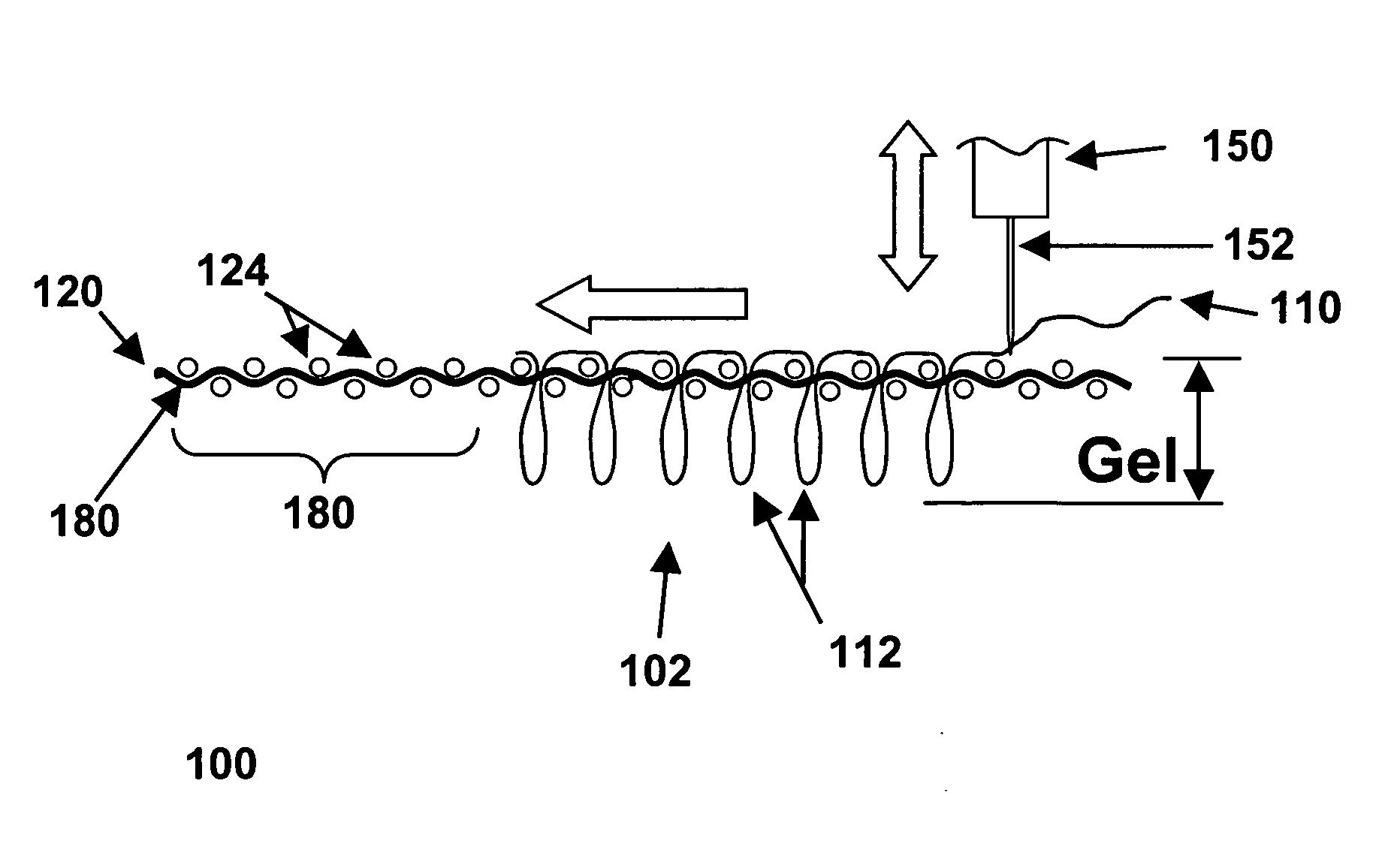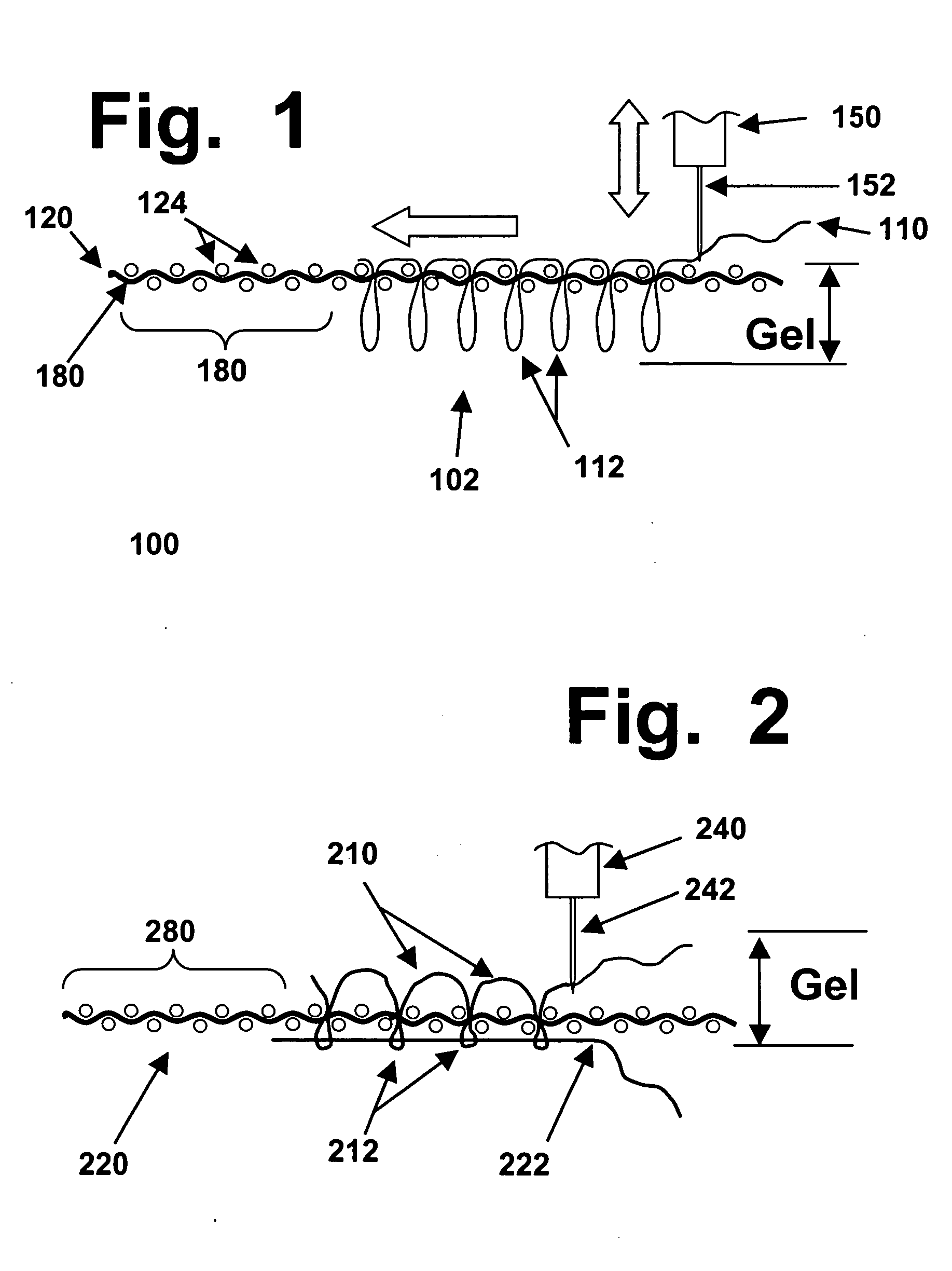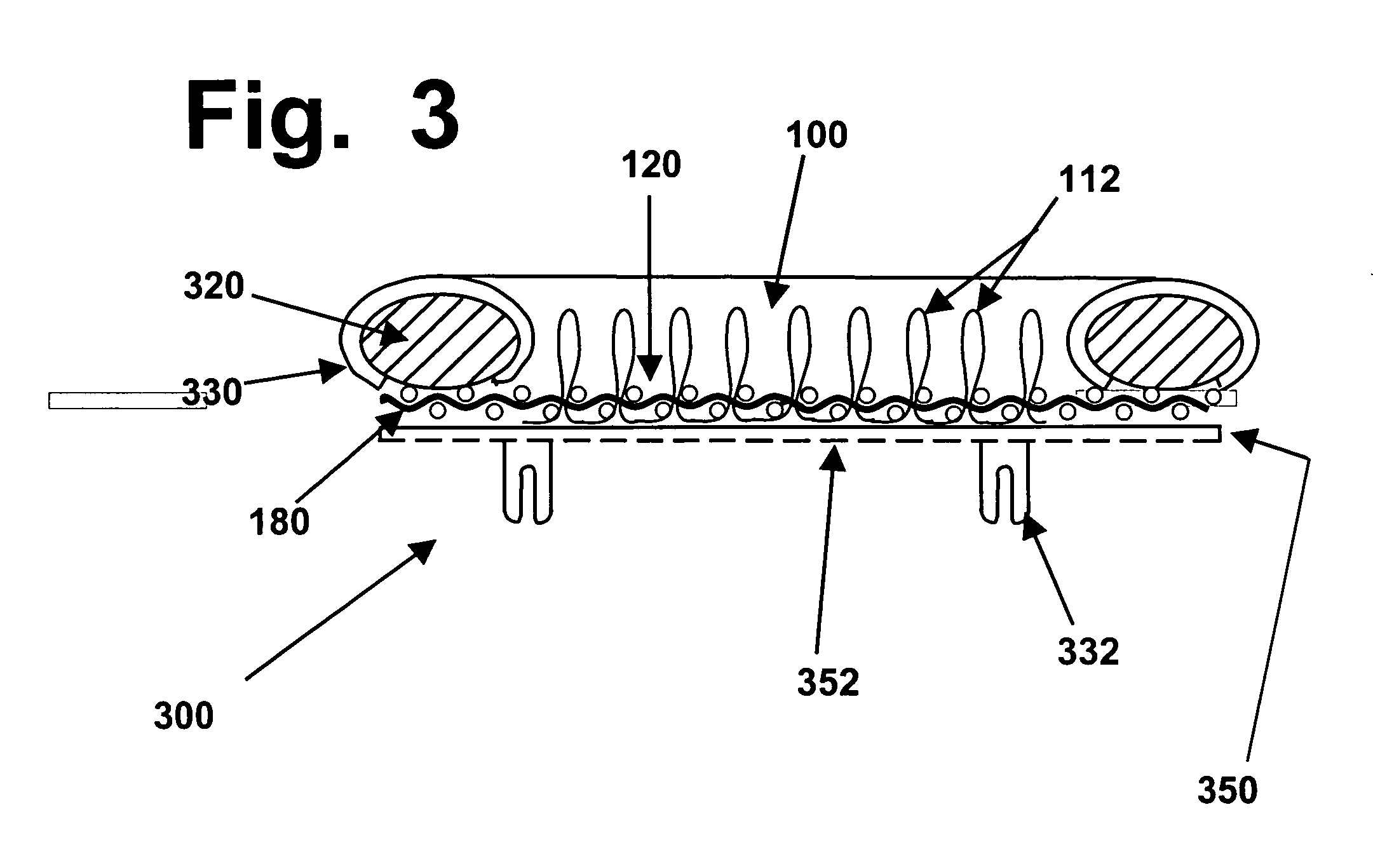While the
hyaline cartilage in some joints (such as fingers) is not heavily stressed, the hyaline cartilage in other joints (notably including knees and hips) is frequently and repeatedly subjected to relatively heavy compressive loads, shear forces, and other stresses, and it does not have a
blood supply or cellular structure that enables the type of
cell turnover and replacement that occurs in most other tissues.
Since it is a
soft tissue that cannot repair itself, it is vulnerable to damage when subjected to repeated loadings and stresses, and it would be even more vulnerable to damage if it were present in thick
layers.
As a result, the
fiber reinforcing layers disclosed herein are subjected to crucially important constraints, when it comes to thickness.
Instead, the spinal discs must completely prevent any sliding or “shearing” motions between adjacent vertebral bones, since any such sliding motions could pinch and severely damage or even sever the
spinal cord.
In repairing a spinal disc, the real challenge is in protecting the
spinal cord, rather than in providing adequate materials for replacing the disc.
In addition, elastic cartilage does not have smooth sliding surfaces that must be carefully protected.
Such implants need to be at least somewhat soft and non-rigid; otherwise, they would scrape, abrade, and damage any opposing cartilage surfaces they rub against.
However, if compressive loads are imposed on a soft and non-rigid
implant carrying transplanted cells, the compressive loads will
pose major risks of damaging the
implant, by squashing and killing the cells in the
implant, or by squeezing the cells out of the implant.
This leads to a difficult balancing act.
Furthermore, because
recovery and
rehabilitation is slow and gradual, and requires months after
surgery is performed,
cell transplant approaches usually are considered as an option only if a patient is relatively young (such as under the age of about 55 or 60), and is not carrying substantial
excess weight.
That creates major limitations, since patients older than about 60, and patients who are
overweight, comprise the very large majority of people who suffer from serious cartilage problems in their knees and hips.
A second obstacle that arises, in repairing hyaline cartilage in moving joints, involves the eventual fates of “resorbable” implants, which are made of specialized materials (such as poly-
glycolic acid combined with collagen fibers) that are slowly digested and dissolved by enzymes in body fluids, over a span of months.
However, biological
resorption and replacement can lead to the release of fragments and debris, after a synthetic material passes a midway point of being partially broken apart and digested by enzymes.
However, if fragments and debris from a partially-resorbed implant were released into a moving joint such as a knee, they might begin abrading and damaging the smooth cartilage surfaces that are pressing, sliding, and
rubbing against each other.
In addition, all teachings and claims herein are expressly limited to
surgical implants that contain hydrogel components.
Although fabrics, sponges, and various other materials can enable the passage of water molecules through those materials, they do not have the type of structural properties or physical and mechanical traits and behavior of gelatinous materials.
Although such hydrogel materials must have at least some degree of deformability, they cannot be in liquid form, and they must return to a specific nondeformed shape after any loads or stresses have been removed.
A different class of colloidal suspensions (often called “thixotropic” materials) can also form hydrogels when allowed to sit in stationary form, but they do not have substantial tensile strength, and they will convert into liquids if subjected to shearing stresses, so they are not of interest herein.
However, because water molecules make up a substantial part of their volume and weight, hydrogels are substantially weaker than
solid plastics that do not contain any water.
Accordingly, hydrogels have not been strong enough or durable enough, in the past, to offer realistic and practical alternatives to hard plastics, for use in implants for repairing or replacing hyaline cartilage in joints such as knees or hips.
However, none of the supporting articles cited in the SaluMedica website could be located in a search of the
database of the National
Library of
Medicine.
Instead, other articles (such as Lange et al 2005 and Meyer et al 2005) were located which reported that serious problems have arisen when such implants are used, including dislodgement and / or apparently total destruction of such implants in some patients who receive them, apparently due to “the inadequate connection to the bone with risk of
dislocation”.
Apparently because of these limitations, statements on the SaluMedica website indicate that the company is not even attempting to obtain approval for use of those devices in the United States.
Over a span of years or decades, any discontinuity in the surface of a “repaired” cartilage segment will
pose a serious risk of abrading and damaging the natural
cartilage surface that presses, rubs, and slides against the modified surface.
This preference arises from the fact that as soon as one
cartilage surface becomes damaged, it loses its smoothness, and begins to abrade and damage the other
cartilage surface that it rubs against.
Accordingly, because any
surgical operation inflicts damage on the tissues and blood vessels surrounding a joint (and causes pain and discomfort, and requires a
rehabilitation period), it usually is better to replace both surfaces in a single operation, rather than repairing one damaged surface in first operation, and then have to repair a second damaged surface in second operation a short time later.
However, as that process was evaluated in more detail, it became clear that it is not well-suited for medical devices that will need to go through a long and extensive process of
in vitro testing,
animal testing, and human clinical trials, before any such implant can be approved for use in human patients.
A major problem arises from the fact the prototypes that will be made and tested, in
in vitro and then animal tests, are likely to be modified somewhat, each time more data and
performance results become available from a previous series of tests.
If a 3D weaving process is used, each newly-modified prototype will incur relatively high setup and startup costs.
This is comparable to the costs of
manufacturing operations that use molding technology, in which a new set of molds must be created each time a customer wants to modify an item being produced, even if the modification is only minor.
Accordingly, even though the TechniWeave process (or other similar processes) may be well-suited for manufacturing large numbers of units after a final design has optimized, it is not well-suited for developing and testing a series of prototypes that will undergo multiple changes, as prototypes are designed, made, and tested, and then redesigned, modified, and tested again based on earlier results.
However, it should be noted that this term is not always used consistently, by physicians and researchers.
Most synthetic fibers used to make conventional fabrics, textiles, or carpets are too thin to work with efficiently, in “monofilament” form.
However, in most cases, a
woven fabric is used, to minimize the risk that the backing layer might suffer from damage,
distortion, or a loss of integrity due to repeated
puncturing by a sharp needle.
Melco's AMAYA
system has become a standardized and widely-used
system; however, it is not the only computer-controlled stitching
machine that is known and available.
Subsequently, after the stitching operation has been completed but before the item runs a risk of being snagged, unraveled, or otherwise damaged, a layer of
adhesive can be applied to the bottom side of the backing layer.
However, that does not change a crucial fact about tufted structures: in a tufted material, the entry and exit points for any specific tuft must be in the same location, and cannot be separated by even a
single fiber of the backing layer.
Computer-controlled stitching machines have been used previously to create various types of
surgical implants; however, to the best of the knowledge and belief of the inventors herein, none of those implants or reinforcing materials have ever previously been designed or used to reinforce hydrogel materials, in implants designed to repair hyaline cartilage in mammalian joints.
However, those types of meshes tend to be relatively thin and flat materials with loose and open structures, and they are not suited for use as described herein.
However, those types of velour materials are not suited for use in the types of implants described herein, which have very different structural and operating requirements.
However, to the best of the inventors' knowledge and belief, none of the items created previously for other medical purposes (such as
blood vessel grafts,
tendon or
ligament repair, etc.) are suited for creating 3D
fiber arrays that will have the types of relatively open structures with consistent thickness that will be needed for optimal reinforcement of hydrogel layers, in implants designed to replace the relatively thin hyaline cartilage layers that cover certain bone surfaces.
In addition, to the best of the knowledge and belief of the inventors herein, none of the stitched implant devices created in the prior art have been created in ways that are designed to enable such implants to be securely anchored to hard bone surfaces that may be subjected to thousands or even millions of cycles of compressive and shearing stresses, when used to replace hyaline cartilage in a knee or other joint.
 Login to View More
Login to View More 


